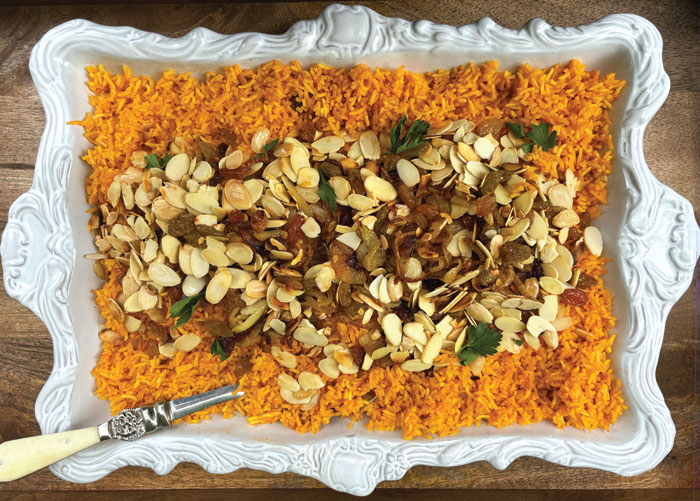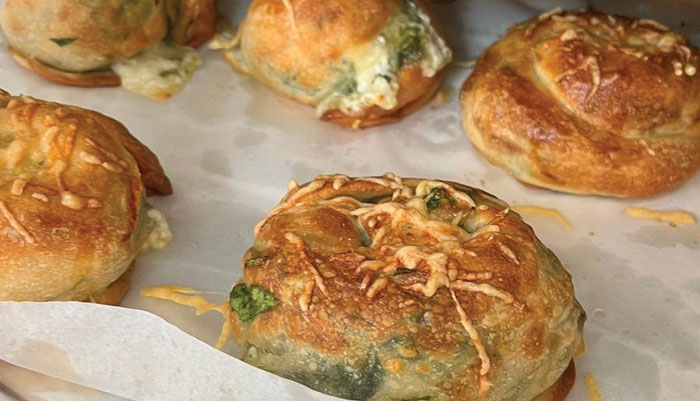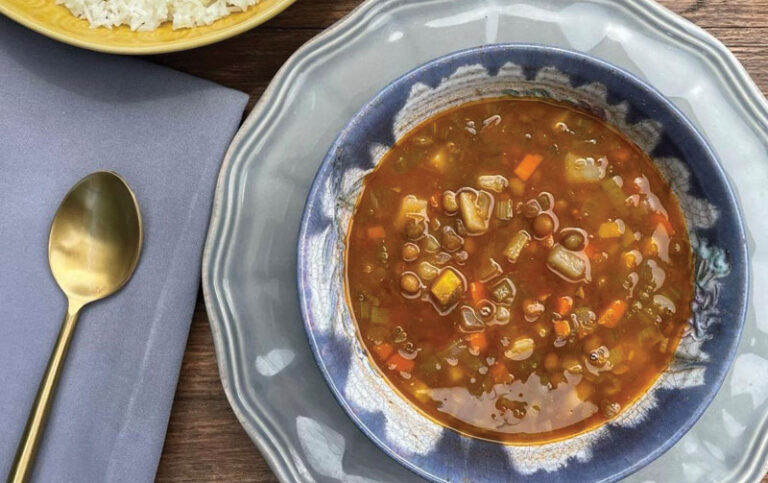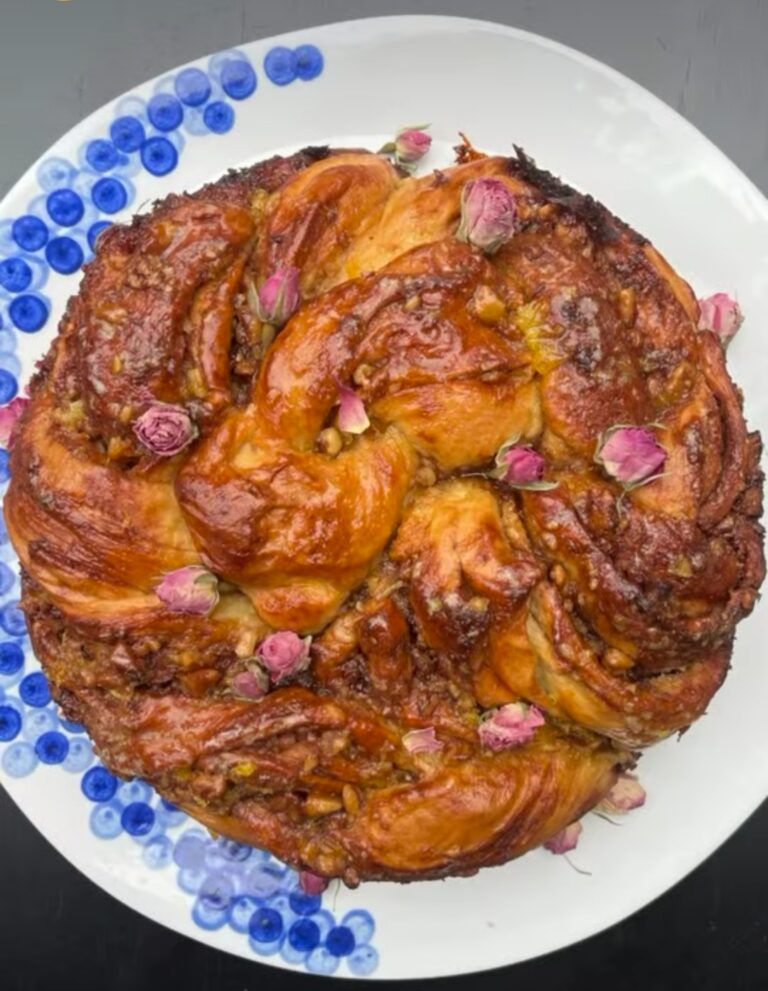Holy Moly — A Perfect Red Rice
This rice makes the perfect side dish for a Shabbat meal of fish, chicken or meat. But could also be perfect midweek with beans and a fresh Israeli salad.

While Neil and I can trace our roots back to Spain, the different journeys that our ancestors took after the Expulsion in 1492 meant that we inherited different culinary traditions. My mother’s kitchen reflected a myriad of Spanish, French and Moroccan influences. My mother-in-law Becky inherited the Sephardic food traditions that developed in the Ottoman Empire outposts of Bulgaria and the tiny little Greek island of Rhodes.
Neil is the adored only child of an only child. He was doted on by his grandparents and his “aunties” in his mother’s extended Rhodesli community. And of course, the universal language of love is food. He was used to the best of the best.
When we were first married, Neil’s mother would bring us pots of her perfect “red rice,” which is very similar to a Spanish arroz.
When we were first married, Neil’s mother would bring us pots of her perfect “red rice,” which is very similar to a Spanish arroz. My husband loved the way his mother made her rice “uno por uno” which literally means that each grain is one by one.
Somehow, by the time of my marriage, I had never mastered the technique of making rice. Whenever Becky’s rice wasn’t available, Neil took on the task of cooking the rice for our meals.
One day, I decided that I was going to make rice. Sometimes the results were a sticky, mushy mess. Eventually I got the hang of it and my rice was really good. My secret is that I only use Mahatma rice and I always use a fork to fluff the rice during and after cooking the rice. My red rice recipe is simple. I simmer a small can of tomato sauce with olive oil, then I add water and salt and bring it to a boil. After the rice is added, I lower the heat to simmer and cover tightly.
My children and their friends love it, so our Friday night dinners always include a delicious red rice.
—Rachel
Friday afternoons in my grandmother’s home always had an air of “kedusha” holiness. In anticipation of Shabbat, the house was pristine.
To tide us over till dinner, she would serve the younger members of her family (my uncle Efrem, my aunt Sophie, my brother Rafi and me) her version of snacks. They were a perfect blend of East meets West, including Iraqi fried herb patties, washed romaine lettuce leaves (no dressing or dip and so refreshing), Arnott’s thin potato chips and yummy raspberry flavored soda. It was heaven.
There was always a large floral arrangement in the living room, as well as little bowls filled with nuts and dried fruit on the coffee table.
The long table in her dining room was set with her lustrous Royal Albert Country Roses china set, with its luscious clusters of red, pink and yellow roses and gold embellishments. Every place setting had a wine glass and a glass filled with her homemade lemonade. The kitchen was pristine, the only evidence of her hard work were big pots filled with one of her Kubbah stews and rice sitting on the stovetop. On the counter, were covered bowls filled with fresh salads. Most exciting for me were the small plates filled with the garnish for her delicious pilau b’jij, a red rice steamed with a chicken broth. Thin strings of caramelized onions, lightly toasted sliced almonds and glistening plump fried sultanas.
As a child, I just loved the combination of the flavorful rice, the soft onions, the crunchy almonds and the sweet, juicy sultanas. My mother still makes it for us, perfectly replicating the delicate flavors of the original dish.
I make my own version, preferring to keep the rice vegan for my pescatarian son, Ariel. Instead of a slow simmered chicken stock, I cheat by using Osem’s pareve chicken consommé.
There are many different types of rice, with each type useful in preparation of different recipes. Sushi is made using a glutinous high starch short-grain Japanese rice. Risotto is also made with high starch grains like carnaroli and arborio.
While I keep these grains in my pantry, basmati rice is the queen of my kitchen. I cook a pot of basmati rice two to three times a week.
Basmati, which literally means fragrant in Hindi, is a long slender-grained aromatic rice. Cultivated for centuries in the Indian subcontinent, basmati is intoxicatingly fragrant. It also has the lowest glycemic index, making it suitable for diabetics.
I learned to cook rice from my mother who taught me to measure two fingers of water above the rice. First, I soak the rice for a half hour, then I rinse it three times before cooking. I cook the rice at a high boil and when there is no longer water in the pot, I lower the flame and cover the pot with paper towel and a very tight-fitting lid. Then I leave the pot to steam the rice to perfection.
This rice makes the perfect side dish for a Shabbat meal of fish, chicken or meat. But could also be perfect midweek with beans and a fresh Israeli salad.
Awafi—to your good health!
—Sharon
Iraqi Red Rice
2 cups Basmati rice
3 1/2 cups boiling water
2 Tbsp pareve chicken consommé powder
3 Tbsp extra virgin olive oil
1 tsp kosher salt
1 tsp sweet paprika
1 tsp turmeric
4 Tbsp tomato paste
6 medium garlic cloves, peeled
Place rice in a bowl, cover with water and soak for 30 minutes.
Add consommé powder to boiling water and set aside.
Rinse the rice three times, then drain all the water.
In a large pot, warm olive oil over medium high heat, then add the rice and sauté for two minutes.
Add the salt, paprika and turmeric and sauté for two minutes.
Add the tomato paste and stir to coat the rice. Add the stock and garlic, then bring to a boil over high heat, stirring frequently.
When small holes form in the rice and all the water has been absorbed, lower the heat.
Cover the pot with a layer of paper towel and a tight-fitting lid.
Leave to steam for an hour.
Fluff before serving.
Fruit and Nut Garnish
1 cup sliced almonds
1/2 cup white raisins or sultanas
1 onion, finely sliced into ribbons
2 Tbsp avocado oil, divided
Warm a nonstick skillet over medium high heat, then add the almonds. Stir the almonds to toast evenly, about 2 to 3 minutes. Remove almonds from skillet and set aside.
Pour 1 tablespoon of oil into the skillet and warm over medium heat. Add raisins and fry until slightly golden and plump, about 2 to 3 minutes. Remove raisins from skillet and set aside.
Add remaining oil to the skillet and warm over medium heat. Add the onions, lower heat and sauté until golden brown, about 15-20 minutes.
Serve over rice.
Sharon Gomperts and Rachel Emquies Sheff have been friends since high school. The Sephardic Spice Girls project has grown from their collaboration on events for the Sephardic Educational Center in Jerusalem. Follow them on Instagram @sephardicspicegirls and on Facebook at Sephardic Spice SEC Food.






